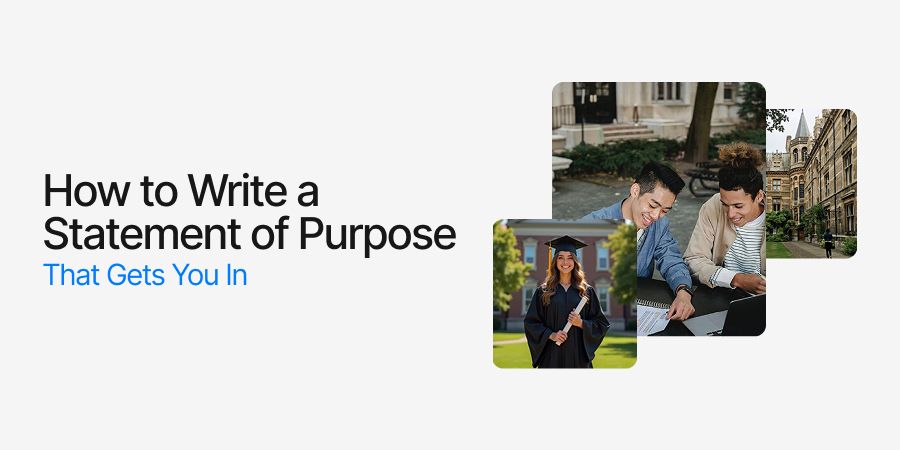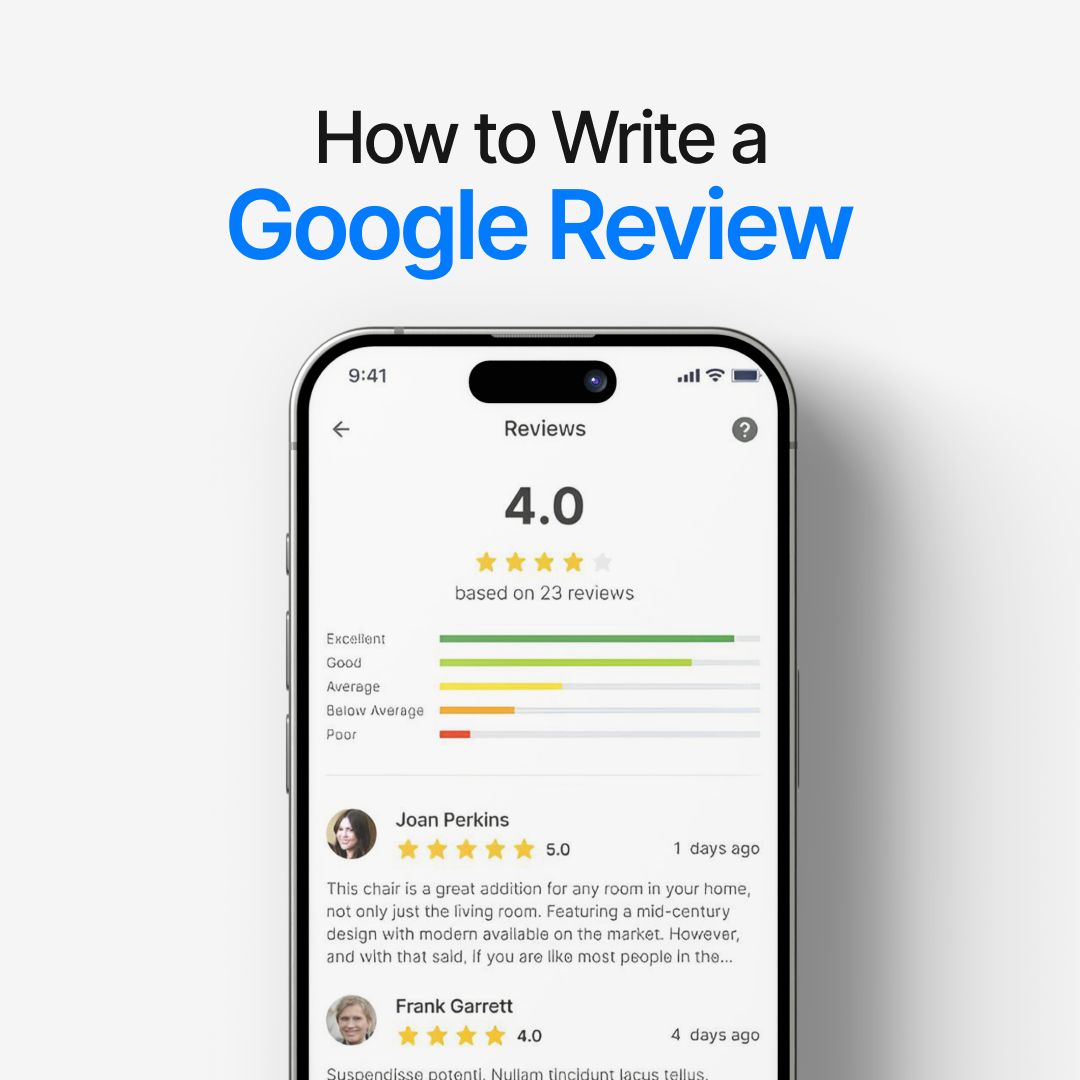
How to Write a Statement of Purpose That Gets You In
Ever wondered why some applications stand out even when test scores look identical?
Sure, you may be able to write great literature reviews, research papers, proposals, or abstracts, but writing a statement of purpose is a different challenge altogether.
It requires more than structure and evidence. It asks for personality, vision, and clarity of goals, all woven into a single narrative that convinces an admissions committee that you belong in their program.
This document carries weight because it introduces the applicant beyond numbers, explaining motivations, goals, and the value they bring.
Admissions committees read hundreds of applications. Transcripts and resumes provide data, but the statement of purpose communicates intent. A clear, well-written SOP connects experiences to future aspirations, showing why a candidate deserves admission.
Strong writing not only increases chances of acceptance but also sets the foundation for academic and professional credibility.
Key focus:
-
A statement of purpose answers who you are, what you want, and why you fit.
-
It bridges academic background, achievements, and career goals into one cohesive narrative.
-
Universities rely on it to assess clarity of thought, commitment, and vision.
Understanding the Purpose of Statement of Purpose (SOP)
A statement of purpose, or SOP, is a formal essay included in university applications. It explains an applicant’s academic background, professional interests, and long-term goals. More than biography, it’s a persuasive essay that positions the applicant as a strong match for the program.
Applicants often confuse SOPs with personal statements. The difference is subtle but important. Personal statements emphasize life stories, challenges, and character. A statement of purpose highlights academic intent, research interests, and professional growth.
Both matter, yet the SOP focuses directly on why the program aligns with the applicant’s vision.
Admissions officers value precision. An effective SOP avoids clichés and vague claims. Instead, it grounds ambition in specific experiences, clear objectives, and program relevance. When done well, it reads as both personal and professional, leaving the reader convinced that the applicant will add depth to the academic community.
Creating a Compelling Statement of Purpose
Strong SOP writing depends on balance. It must sound professional without losing personality. It must be ambitious without exaggeration. Each sentence should push the case forward, connecting past experiences with future goals.
A well-structured statement of purpose often follows a pattern that admissions committees expect:
-
Introduction with purpose – a clear opening that states interest in the program.
-
Academic background – coursework, research, or projects that built expertise.
-
Professional experiences – internships, jobs, or fieldwork tied to career direction.
-
Research or specialization goals – specific areas the applicant intends to pursue.
-
Program alignment – reasons why this particular university and program fit.
-
Future aspirations – long-term career objectives and contributions to the field.
The mistake many applicants make is relying on vague claims such as “I have always been passionate about…” or “Since childhood, I wanted to…”. Committees dismiss these as generic. Instead, detail matters.
Citing a project, internship, or achievement adds credibility and separates the applicant from others.
Examples of Strong Statement of Purpose Writing
Review committees notice when an SOP is written with clarity and substance. Strong statements focus on evidence, not adjectives. Below are patterns often seen in accepted applications.
-
Academic SOP Example
An applicant to a computer science graduate program begins with a brief description of a capstone project on natural language processing. The statement explains the research process, the tools used, and the outcomes.
Specifics such as “built a sentiment analysis model with 89% accuracy” create impact. The writing then connects this experience to a goal of advancing research in AI ethics.
-
Professional SOP Example
The SOP then ties this achievement to an interest in sustainable business strategy, positioning the program as the bridge between current expertise and future leadership.
-
Interdisciplinary SOP Example
Applicants to programs that merge disciplines benefit from showing range. One strong SOP in environmental policy drew from both academic research on climate science and professional experience in urban planning.
The narrative explained how both shaped the applicant’s interest in policy frameworks that integrate scientific data with city infrastructure planning.
-
Common Features in Strong SOPs
-
Clarity of purpose – the reader instantly understands why the applicant is pursuing the program.
-
Evidence-driven claims – achievements are backed by numbers, projects, or publications.
-
Alignment with the program – reasons for selecting the institution are explained with specificity.
-
Forward-looking goals – the statement projects a career path that feels realistic and ambitious.
-
Weak SOPs often lack these qualities. They rely on generic phrases, fail to explain goals, or read like resumes in paragraph form. Admissions teams reject such writing quickly.
Step by Step Process to Write a Statement of Purpose
Writing a statement of purpose requires planning, drafting, and revising with precision. Each stage has a clear role in ensuring the document communicates intent and ability.
Step 1: Identify Core Purpose
Every SOP begins with answering why. Clarify why the degree is important, why the institution is relevant, and why the timing matters. Without a central purpose, the statement reads scattered.
Step 2: Gather Evidence
Collect details that prove readiness.
Examples include:
-
Research projects with outcomes or publications
-
Professional achievements with measurable results
-
Leadership roles that shaped skills
-
Awards, scholarships, or recognitions
These form the backbone of credibility.
Step 3: Draft a Compelling Introduction
Open with a hook that reflects motivation. It may be a research question, a career problem, or an academic influence. The introduction sets tone and must guide the reader toward the thesis of the SOP.
Step 4: Build the Body with Structure
Organize content into three parts:
-
Academic Background – courses, projects, or skills gained through education
-
Professional Experience – internships, jobs, or work achievements tied to the field
-
Future Goals – what the applicant intends to achieve with the degree
Each section should transition naturally and point back to the main purpose.
Step 5: Connect With the Program
Explain why this program is the right fit. Mention faculty, labs, research groups, or unique curriculum features. Avoid generic praise and show awareness of specific offerings.
Step 6: Write a Strong Conclusion
Summarize key points and reaffirm intent. Keep the close confident, not repetitive. A strong conclusion emphasizes readiness and shows commitment to contribute value to the institution.
Step 7: Revise and Polish
Editing sharpens clarity. Remove vague language, tighten word choice, and ensure grammar accuracy. Reading aloud often highlights awkward phrasing. Peer feedback can refine flow further.
How to Write a Statement of Purpose With Chatly
Writing a statement of purpose can feel overwhelming, but Chatly makes the process lighter.
Instead of staring at a blank page, you get tools that help you research, structure, and refine your draft. Think of it like having a coach who shows you the steps and checks your work.
-
Search with AI Search
Using AI search, type in the school or program name and quickly gather details about professors, courses, and requirements. This helps you avoid generic writing and show that you know the program well.
-
Ideate and Plan with AI Chat
Ask Chatly AI Chat to create an outline based on your background and goals. You’ll see where to place your education, experiences, and reasons for applying, like a map before you start walking.
-
Try different voices with multiple models
Use OpenAI, Claude, Gemini, or Grok inside Chatly to test different writing styles. Some sound formal, others more natural. Pick the tone that feels closest to how admissions committees expect students to write.
-
Polish the draft
Chatly can spot sentences that are too long, ideas that repeat, or sections that feel unclear. It suggests shorter, sharper alternatives so your writing stays clear and confident.
-
Check the format before sending
Ask Chatly to review word count, structure, and overall flow. It makes sure your SOP isn’t too long or too vague and confirms it looks professional from start to finish.
Conclusion
A statement of purpose is more than part of an application. It acts as a persuasive essay that shows capability, intent, and alignment with the chosen program.
Each section – introduction, background, goals, and fit – works together to prove readiness. Clear structure, relevant examples, and direct language separate strong statements from generic ones.
Students who invest time in drafting and refining improve their chances of admission. Proofreading, testing readability, and aligning personal goals with program strengths make the writing stronger.
A polished statement of purpose convinces committees that the applicant is serious, prepared, and valuable to the institution.
Suggested Reads
If you’re preparing application documents, these guides will help refine your writing and structure:
Frequently Asked Questions
Top questions related to writing a statement of purpose (SOP).
More topics you may like

How to Write a Brand Collaboration Proposal in 2025

Muhammad Bin Habib

How to Write a Case Report in 2025

Muhammad Bin Habib

How to Write a Cover Letter with No Experience Using AI Chat

Muhammad Bin Habib

How to Write a Case Study, with Examples, Tools and Templates

Muhammad Bin Habib

How to Write a Google Review That is Helpful and Feels Unbiased

Muhammad Bin Habib
